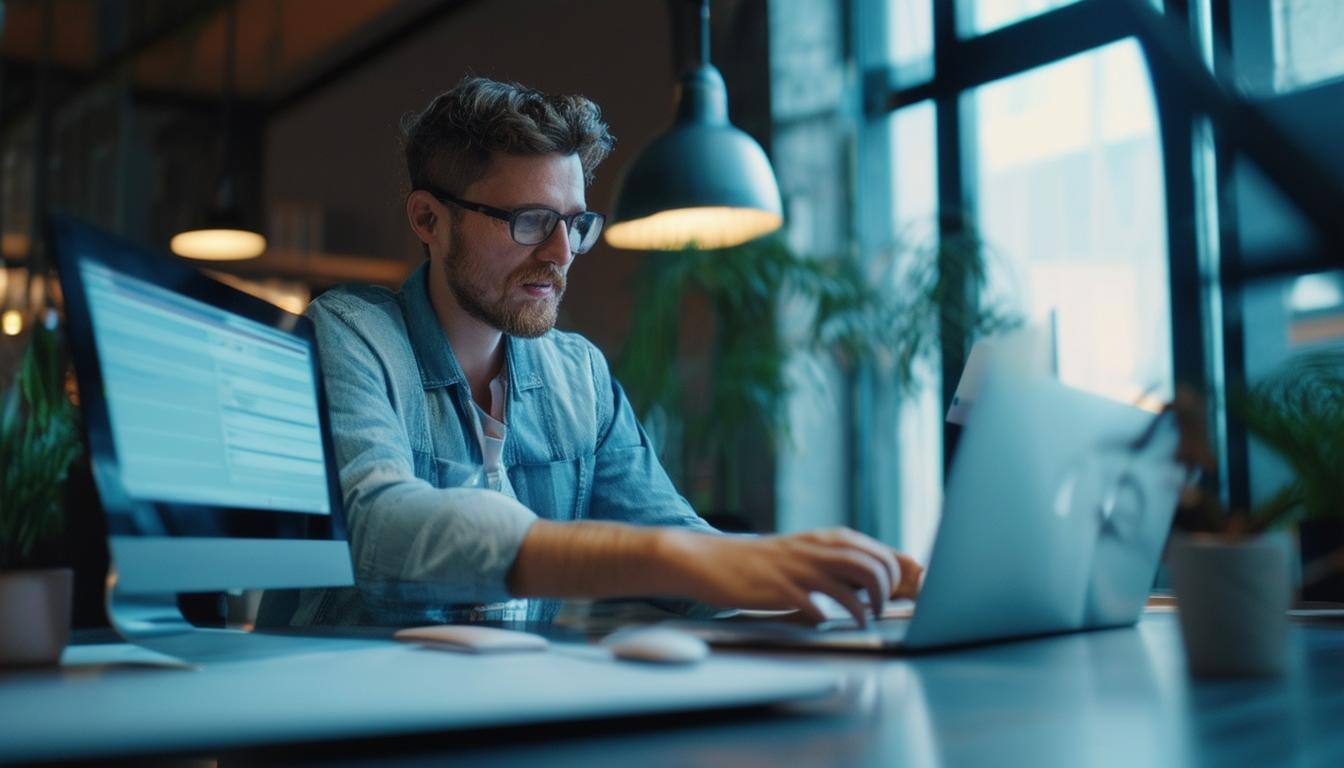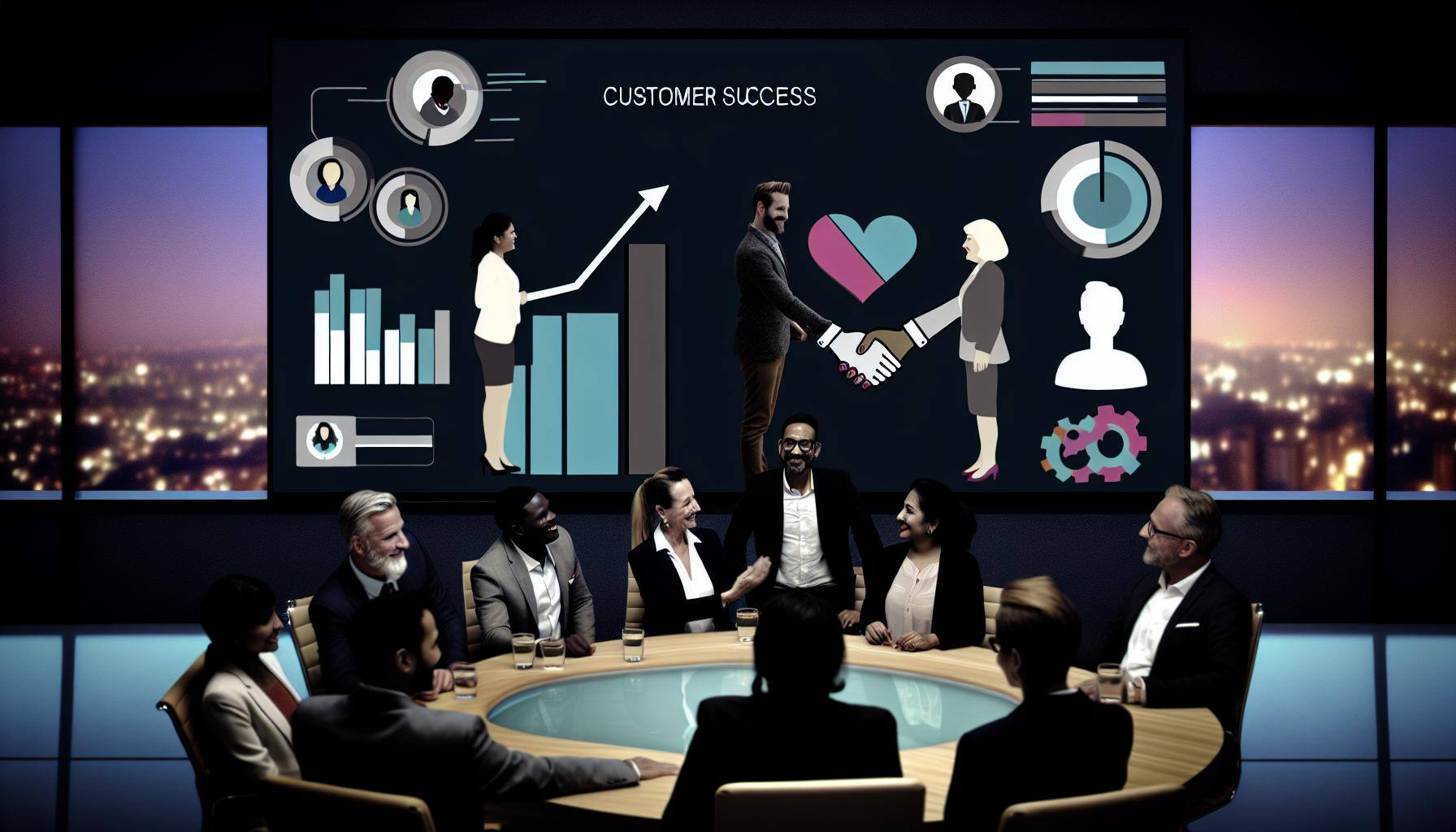Proven Strategies to Reduce Customer Churn in B2B SaaS
In the fast-paced world of B2B SaaS, keeping your customers is the difference between thriving and merely surviving. High churn rates can drain your...
9 min read
Brian Polackoff
:
May 31, 2024 10:34:00 AM

What if preventing churn was like sealing leaks in a ship—each effort keeps you afloat and moves you forward? Are you ready to plug those leaks and steer toward lasting success?
In the SaaS world, customer churn is a key factor that can affect stability and growth. Tackling churn might feel overwhelming, but with the right strategies, it becomes manageable. Churn—the rate at which customers cancel their subscriptions—is a common problem that SaaS companies face. By using tools like predictive churn analytics and prevention software, companies can keep more customers, boost satisfaction, and grow revenue. This article dives into what churn means for SaaS and, more importantly, how to fight it with proven strategies.
Churn rate measures the percentage of customers who leave the service during a specific period, usually monthly or yearly. A high churn rate means many customers are canceling their subscriptions, which can be a big problem for any SaaS business. Understanding churn is crucial because it affects revenue and often shows dissatisfaction with the product or service.
To reduce churn effectively, SaaS companies need to measure it accurately. Key metrics include monthly churn rate, revenue churn, customer lifetime value (CLTV), and predictive customer retention analytics. These metrics help understand customer retention and the financial impact of losing customers. By tracking these, SaaS companies can identify trends, spot at-risk customers, and take action.
Once churn is measured accurately, SaaS companies can use proven techniques to reduce it:
Customer Success Initiatives: Fostering customer success means addressing issues before they become problems and helping customers reach their goals. This could include onboarding programs, regular check-ins, and tailored resources that meet customer needs.
Personalization: Personalized communication and services increase engagement and satisfaction, making customers less likely to churn. For example, tailoring onboarding or product tips based on how each customer uses the product can make a big difference.
Feedback Loops: Collecting, analyzing, and acting on customer feedback helps identify areas for improvement and shows customers that their opinions matter.
Predictive Churn Analytics and Prevention Tools: Predictive models and churn prevention software help identify customers who are likely to leave, allowing companies to step in early with targeted retention strategies. Predictive customer retention software is a powerful tool that can improve retention efforts.
Customer Experience Improvement: Continuously improving the customer experience—by refining products based on feedback, enhancing support, and ensuring smooth onboarding—helps retain customers. Happy customers are less likely to leave.
Focusing on these metrics and strategies allows SaaS companies to address churn and build a loyal customer base that supports growth.
Customer success programs are important for reducing churn. By helping customers achieve their goals while using the product, SaaS businesses can boost satisfaction, loyalty, and retention. A customer success team can identify clients at risk of leaving and offer personalized solutions.
Customer success is a core strategy that can make or break your SaaS business. While product features and pricing attract customers, it's often the proactive support and guidance of a customer success team that keeps them loyal. Every interaction with your customers offers vital insights to prevent churn and boost satisfaction, especially in a competitive SaaS environment. Customer success teams are key players in reducing churn. They identify at-risk clients, use data-driven strategies, and build strong relationships to boost retention and customer lifetime value. Learn how these teams can elevate your retention strategy and build a stronger customer base.
Every customer has different needs and expectations. Personalized customer retention plans can address specific concerns and improve the overall experience. Custom strategies, such as special onboarding, exclusive offers for at-risk customers, and personalized product tips, can greatly increase loyalty.
We covered the best churn prediction tools available, explaining how each one helps identify at-risk customers early so you can take action to keep them. You'll discover features like predictive analytics, cohort analysis, and easy-to-use dashboards that make customer retention simple, even without a data science background. By understanding these tools, you'll be ready to choose the right solution for your business, empower your customer success team, and boost customer lifetime value. If reducing churn and building loyal customer relationships is your goal, this guide will help you pick the best churn prediction software.
To reduce churn, it's important to understand why customers leave. Collecting and analyzing feedback gives insights into what isn't working and where improvements are needed. SaaS companies can use this feedback to improve their products, customer support, and overall retention strategies, directly tackling the reasons customers leave. Customer feedback gives essential insights into user needs, expectations, and frustrations. This helps SaaS businesses stay aligned with customer demands and improve product-market fit.
How are you using customer feedback to strengthen your relationship with users and make your product even better?
Good customer support is key to preventing churn. Fast, reliable support helps solve issues before they grow, improving customer satisfaction. A strong support team acts as a bridge between the user and the SaaS company, promoting better communication and understanding of the product, which in turn reduces churn.
Guiding Customers to Success: Customer support helps customers achieve their goals by providing timely help and resources. This ensures they get the most value out of the product, reducing the chances of churn.
Resolving Issues Quickly: Fast problem resolution keeps customers satisfied and engaged. Addressing their concerns promptly prevents frustration and helps them stay on track with their objectives.
Personalized Support for Unique Needs: Offering personalized support helps meet the specific needs of each customer. By addressing individual challenges, support teams make sure customers feel understood and valued, which strengthens loyalty.
Are you using best practices in customer support to ensure your customers achieve their goals and stay loyal to your product?
Best practices like quick response times, multichannel support, and continuous training for support representatives can greatly improve service quality.
Integrating customer support directly into the SaaS product, such as through live chat or in-app help, ensures help is available when customers need it.
Seamless integration of customer support features into SaaS products allows users to easily seek help without leaving the application, a strategy to enhance use your product and reduce customer churn rate. This integration not only improves accessibility but also signals to the customer that the company is committed to their success, satisfaction, and fostering positive customer relationships. Investing in such integrations can be a powerful strategy to reduce churn by elevating the overall customer experience.
Popular ideas in this category are:
Real-Time Assistance: Integrating support within the app ensures users get help right when they need it, reducing frustration and improving their ability to meet their goals.
Proactive Help Suggestions: Built-in support can offer proactive help, like pop-up tips or suggestions based on user activity, which helps customers navigate the product more effectively.
In-App Ticketing System: An in-app ticketing system makes it easy for users to report issues directly, ensuring faster resolution and minimizing disruptions.
Seamless Escalation Paths: If basic support is not enough, built-in features can escalate issues to higher support levels without the user needing to switch platforms, improving problem resolution.
Usage Analytics for Better Support: Integrated support systems can collect usage data to identify common problems, enabling the support team to create better self-help resources and FAQs that directly address customer needs.
Customer satisfaction is inversely related to churn rate; highly satisfied customers are less likely to leave. Satisfied customers typically demonstrate high engagement levels, regular use of the product, and positive feedback. Ensuring customer satisfaction through quality products, exceptional service, and regular engagement can thus play a significant role in churn reduction. As you can see, it doesn't help to just think of customer success and customer support as cost centers when they each can protect and add to your bottom line.
Improving customer satisfaction to reduce churn involves several strategies, including setting and managing customer expectations, delivering consistent value, and creating a feedback loop to continually adapt and improve. Loyalty programs, reward systems, and regular check-ins can also foster a sense of belonging and appreciation, encouraging customers to stay longer.
Monitoring key performance indicators related to customer satisfaction, such as Net Promoter Score (NPS), Customer Satisfaction Score (CSAT), and Customer Effort Score (CES), can provide early warnings of potential churn risks. These metrics, when analyzed alongside churn rates, help SaaS businesses to predict which customer segments are dissatisfied and likely to churn, allowing for proactive measures to retain them.
Understanding the customer journey from initial awareness through to purchase and ongoing use provides valuable insights into potential friction points that could lead to churn. By mapping this journey, SaaS companies can identify critical stages where customers are most likely to drop off and can implement targeted interventions to mitigate these risks.
Personalization throughout the customer journey can greatly improve the experience, leading to higher satisfaction and lower churn.
Understanding and optimizing the customer lifetime value (CLV) provides a strategic approach to reducing churn. Investing in customers with high potential lifetime value through personalized services and exclusive offers can secure their loyalty and reduce overall churn rate. This focus ensures that resources are allocated efficiently, maximizing ROI and fostering a stable, satisfied customer base.
In summary, reducing customer churn in the SaaS industry requires a focused approach that uses data-driven insights, proactive customer support, and personalized engagement. By understanding why customers leave, improving their experience at key points, and adapting strategies based on feedback, SaaS companies can lower churn effectively. Using tools like predictive analytics, customer success initiatives, and personalized support not only helps retain customers but also builds loyalty and growth. Are you ready to turn your customers into advocates? How can you improve their experience today to create loyal fans tomorrow?

In the fast-paced world of B2B SaaS, keeping your customers is the difference between thriving and merely surviving. High churn rates can drain your...

In the rapidly evolving world of Software as a Service (SaaS), understanding customer churn and retention is crucial for ensuring your business's...

How You, as a C-Level Executive, Can Reduce Churn in Key Accounts In this guide, we will explore the significant role you play in reducing churn in...